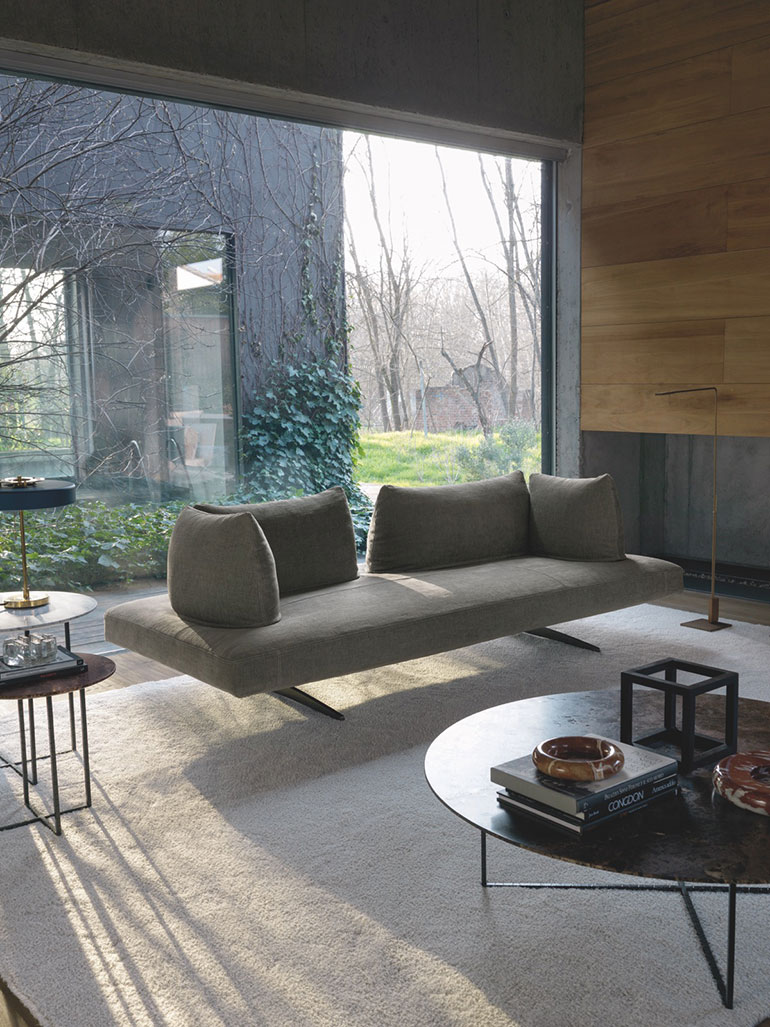10 Questions With… Marc Sadler
 Designer Marc Sadler‘s love for one cold-weather sport also revolutionized it. In the 1970’s, after a bad accident, the avid skier developed an ankle-stabilizing boot which was for several years the most widely sold ski boot in the world.
Designer Marc Sadler‘s love for one cold-weather sport also revolutionized it. In the 1970’s, after a bad accident, the avid skier developed an ankle-stabilizing boot which was for several years the most widely sold ski boot in the world.
Today Sadler continues to combine technology and design, with the Twiggy and Mite lamps for Foscarini and a motorcyclist’s back protector for Dainese that can be found in the Museum of Modern Art’s permanent collection along with items on his extensive and far-reaching design resume.
Here he tells Interior Design about a project close to his heart, reveals new products, and explains why Italy’s design climate is hard to beat.
Interior Design: You were born in Austria but consider yourself French. How do you feel these two countries influenced your upbringing from a design perspective?
Marc Sadler: I was born in Austria by chance; my parents were French and I have French citizenship too. I lived in Austria for four years after my birth, then the family moved to Baden Baden, Germany, and finally to France. Rigor and analytical skills come from my country of birth, while a sense for aesthetic comes from my French DNA.
ID: How do you feel the design climate in Italy, the country where you choose to live, influences your work?
MS: Italy is the cradle of design. Design has spread to almost all fields of industrial production. Italian companies are usually small, but they aren’t afraid to contact designers to create new products that can impose themselves in a market that’s more and more global and saturated.
The direction you can apply design is widespread in Italy, from manhole covers to aeration grids.
The Italian industry’s openness towards design has a positive influence on my work because it allows me to be proactive in different fields. Moreover, I can export technologies that are consolidated in a certain sector to other fields where it’s still unknown. This versatility of knowledge really enriches my job.

ID: Can you describe a few recent products?
MS: I recently completed the Lovely Day sofa for Gruppo Euromobil’s Désirée brand. It has a matte-bronze metal base and is designed to occupy the center of a room. Removable, self-supporting cushions can be placed at different angles to ensure perfect comfort for any configuration.
The glass, crystal, and LED Raqam is a contemporary chandelier I designed for Masiero and comes in many shapes and sizes. It is customizable thanks to modular combinations produced by assembling seven glass elements equipped with LED light sources. It’s a new design language based on proportion and harmony.
Ghost for Simes is really a lighting void. It is revolutionary because it works by subtraction rather than addition: no visible lighting fixture is added to the building’s structure. On the contrary, it consists in a void filled with light.
ID: Do you have a product that is particularly special to your heart?
MS: I would say the Dainese motorcyclist’s back protector without a doubt. Gratification didn’t come through any formal recognition (on the contrary, in the beginning people said it was ugly), but from the fact that this product could save lives. We received many letters of thanks, along with accounts of bad accidents that could have turned into tragedies if the back protector didn’t exist!
ID: Do you have a person, place, or thing—inside the industry or out—that inspires you?
MS: In general, I do not have one source of inspiration. I’m curious about life. I like living in nature and finding inspiration from it, but I also like big cities, where proof of human genius is gathered. Although I am known to be antisocial, I actually like talking to other people. Their experiences can offer many sources of reflection.
ID: What is your latest design obsession?
MS: I’m involved in a new design school, Raffles Milano, which will open in a few months in Milan, as the course leader of a Master’s program in product design. My aim is to teach students very concrete, practical design.
That means not only how to take on projects from a technical point of view, but also how to present them the best way possible, how to deal with clients, and how to protect the intellectual patents of their ideas. All these aspects are usually overlooked, leaving a void in this knowledge for young designers entering the profession.
ID: Do you have an interiors pet peeve?
MS: I hate any exasperated minimalism. At the opposite end of the spectrum, I also hate the fake vintage look.

ID: Personal preference: town house or loft, cottage or estate?
MS: I like all situations, provided that they are beautiful. But I do need privacy and struggle to live in close contact with neighbors, especially those who are noisy or pushy.
ID: What you couldn’t live without?
MS: An HB pencil with a perfect tip, a block of paper of top quality, and a bottle of chilled champagne.
ID: What’s your dream commission?
MS: A German company holding well-established technology, eager to open up itself to the transversal creativity of a French designer, born in Austria, living in Italy.


